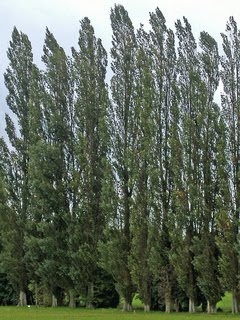 Well, it turns out I have a tree-doppelganger named Meara O'Reilly over at Boingboing. She's posted TWO great stories about tree planting in the last week, and I continue to unabashedly use her posts. If you know me, you know how important Provence is to me. So, it is with great pleasure that I share the (fictional) story of one man who decided to replant a desolate valley one pip at a time. His story has just been animated, and you can read up on it here:
Well, it turns out I have a tree-doppelganger named Meara O'Reilly over at Boingboing. She's posted TWO great stories about tree planting in the last week, and I continue to unabashedly use her posts. If you know me, you know how important Provence is to me. So, it is with great pleasure that I share the (fictional) story of one man who decided to replant a desolate valley one pip at a time. His story has just been animated, and you can read up on it here:With each frame hand-drawn in pencil and smudged into the next, Oscar-winning animator Frédéric Back tells the story of Elzéard Bouffier, a lone shepherd in the Alps near Provence who boldly decides to single-handedly reforest the desolate valley where he lives, one acorn at a time. Not only is the story defiantly romantic, I'm in love with the way Back's patient devotion to each drawing mimics the methodical tree-planting of his main character. [amazon link]
This looks like a lovely film, and I can't wait to see it. There are days I catch the brief aroma of sun-bitten pine dust on the wind, and for a brief moment I am back in chalky valleys of France surrounded by pine-scrub and that strange blue light of the Provencal sun. There is something stubborn about these pines--craggly, bent, beaten, blown, but still reaching skyward and releasing a sweet perfume, like the wimple of a woman's scarf in a slight wind.






